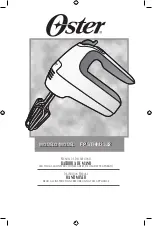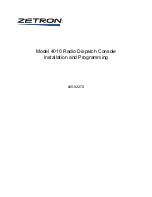
12
Guided Tour - Rear Panel
7: Aux Returns (1/2, 3/4) - These unbalanced 1/4" TRS inputs allow you to
route signal from external devices such as effects processors to either of the two
stereo Aux Returns. These jacks accept 1/4" TRS plugs, with the tip carrying
the left signal and the ring carrying the right signal (sleeve is common ground).
See the “Using Aux Sends and Returns” section on page 20 in this manual for
more information.
8: Aux Sends (1, 2) - These unbalanced 1/4" outputs allow you to route signal
from either of the two discrete Aux Sends to external devices such as effects
processors. All four MPL 1204 Aux sends are post-fade. See the “Using Aux
Sends and Returns” section on page 20 in this manual for more information.
9: Tape/CD inputs (L, R) - Use this set of dual RCA jacks to connect the
outputs of a tape or CD player to the MPL 1204. When the “Tape” switch
(see #11 on page 8) is pressed in, signal connected here is routed to channels
11 and 12 (the left side is routed to channel 11 and the right side is routed to
channel 12), with any mic and line input signal connected to channels 11 and 12
automatically muted.
10: Main outputs (L, R) - These are the MPL 1204’s main outputs. In live
performance applications, you’ll usually use these to connect the MPL 1204 to
a power amp and speakers; in recording applications, these will normally be
connected to the inputs of a two-track recorder. The Main out XLR jacks are
electronically balanced, so you should use balanced three-conductor cabling
wherever possible for optimum signal quality and reduced outside noise and
hum. See the “Connecting the MPL 1204” section on page 11 in this manual for
more information.
11: Control Room outputs (L, R) - In recording applications, these will
normally be connected to a power amplifier and loudspeakers. The Control
Room out jacks are electronically balanced, so you should use balanced
three-conductor cabling and 1/4" TRS plugs wherever possible (unbalanced
two-conductor plugs can also be inserted into these outputs, but you’ll get better
signal quality and less outside noise and hum if you use balanced lines). See
the “Connecting the MPL 1204” section on page 11 in this manual for more
information.
12: Bus outputs (1 - 4) - These unbalanced outputs allow you to route signal
from each of the four discrete buses to external devices such as a multitrack
digital or analog tape recorder. The signal is post-bus fader but pre-Main
control. See the “Busing, Submixing, and Channel Muting” section on page 17
in this manual for more information.
13: Bus Inserts (1 - 4) - Use these to insert an external effects processor
(such as outboard equalizer, compressor/limiter or noise gate) into any of the
MPL 1204’s four buses in an “effects loop” configuration. This enables you to
process a group of signals simultaneously (such as a drum submix being sent to
a single track of a tape recorder) at unity gain. These jacks accept 1/4" TRS
plugs, with the ring carrying the send signal and the tip carrying the return
signal. Normally, this will be connected to a Y-cord; see the “Connecting The
MPL 1204” section on page 12 in this manual for more information and a wiring
diagram. Bus inserts can also be used to link multiple MPL 1204s or to bring the
output from another mixer into the MPL 1204 without taking up channel line
inputs. See the “Using Inserts” section on page 21 and the “Linking the
MPL 1204” Application on page 26 in this manual for more information.
Содержание MPL 1204
Страница 1: ...MIXER SAMSON MPL 1204 ...













































